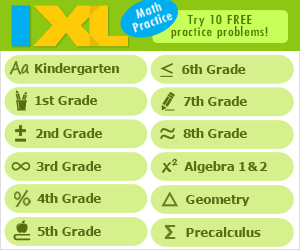3rd Grade English Language Arts - Literature Standards
All links in the pages below were verified in December, 2014
To work on third grade literature standards, click on the numbers below to visit pages of internet resources for each of the learning standards.
Checks for Understanding are at the top of this page. Scroll down to find internet resources related to the State Performance Indicators (SPIs).
Checks for Understanding (Formative/Summative Assessment)
0301.8.1 Pre-Reading Strategies - Develop and use pre-reading strategies (e.g., identify a purpose for reading {for information, for enjoyment, for understanding a writer's position}, make predictions using text features {illustrations, graphics}, preview text using illustrations, graphics, text format, text structures, and skimming). 0301.8.2 Determine Meaning - Demonstrate strategies for determining meaning while reading and checking for understanding after reading. 0301.8.3 Reading Comprehension - Check for understanding after reading (e.g., draw conclusions based on evidence gained while reading, identify the stated or implied main idea). 0301.8.4 Read Fluently - Read with increasing fluency and confidence from a variety of texts (e.g., paired readings, shared reading, choral reading, teacher-led reading, reading from
tapes/CDs).0301.8.5 Vocabulary - Build vocabulary by listening to literature and participating in discussions. 0301.8.6 Forms of Text - Recognize varying forms of text (e.g., poems, plays, stories). 0301.8.7 Literary Styles - Read and review various literary (e.g., short stories, fairy tales, folk tales, poetry, plays and nonfiction). 0301.8.8 Story Elements - Define and identify setting and characters, including main and minor characters. 0301.8.9 Compare and Contrast - Compare and contrast different versions/representations of similar stories, legends, lessons, or events reflecting different cultures. 0301.8.10 Use of Language - Explore the use of language in literary texts (e.g., rhythm, beat, imagery, simile, and metaphor). 0301.8.11 Rhyming Words - Identify and produce rhyming words. 0301.8.12 First Person - Explore the concept of first person point of view. 0301.8.13 Library - Visit libraries/media centers; select and check out materials. 0301.8.14 Chapter Books - Read longer narrative and expository text independently, including chapter books. 0301.8.15 Discuss Literature - Discuss literature (e.g., book discussions, literacy circles, writing, oral presentations). State Performance Indicators
SPI 0301.8.1 Select Rhyming Words - Identify and/or select rhyming words. SPI 0301.8.2 Setting, Character and Plot - Identify setting, characters, and plot in a reading selection. SPI 0301.8.3 Poems, Plays, or Stories - Identify forms of text as poems, plays, or stories. SPI 0301.8.4 Fairy Tales - Recognize basic plot features of fairy tales, folk tales, fables, and myths. SPI 0301.8.5 Author's Purpose - Identify the author's purpose (e.g., to entertain, to inform, to describe, to share feelings). SPI 0301.8.6 Problem and Solution - Determine the problem in a story and recognize its solution. Review Help Resources to help review Third Grade Engligh Language Arts standards
Search Internet4Classrooms

Custom Search






